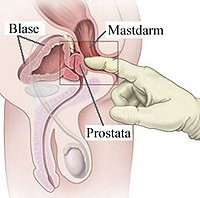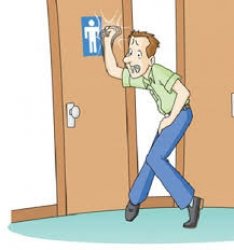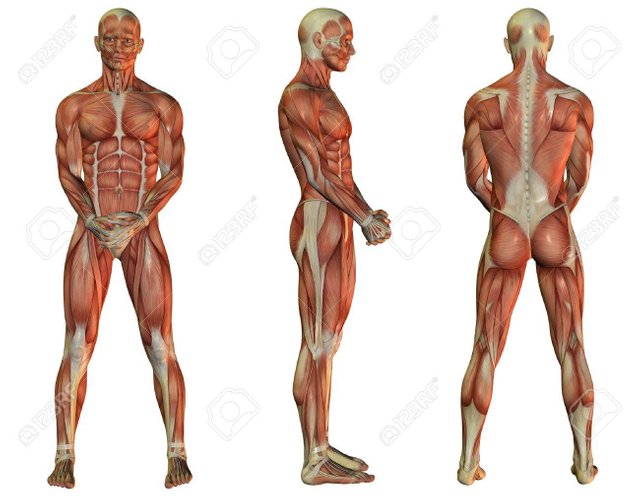Male Urinary Incontinence
About male incontinence
The severity of male urinary incontinence varies from mild incontinence, virtually unnoticed, and severe incontinence, which affects all aspects of your life. You may have different levels of urine loss and the syndrome may change over time. For example, men with mild incontinence may have small losses of urine when they laugh or cough, while men with severe incontinence may have continuous loss. No two people are alike, so no two men are affected in the same way.
Many men understand incontinence as embarrassing. However, they do not have to be ashamed nor does this situation imply a decrease in their masculinity.

In fact, millions of people suffer from weakening of the bladder.
Normally, incontinence prevails more in women than in men. However, older men and women suffer from incontinence in the same proportion.
The knowledge of your own body facilitates control and obtaining the help you need to live life with well-being. In this article, we will begin with a general description of male incontinence and the three main types. Then we will identify some of the most common causes and treatments for male urinary incontinence. The basic principles will help you understand your needs and the best way to approach the issue with your doctor or health care provider. In many cases, it is possible to cure loss of bladder control. Almost all cases are likely to be managed.
Types of incontinence that men can suffer from.
There are three main types of male incontinence:
Pressure incontinence:
This type of male incontinence occurs when external pressure on the bladder causes a weakened leak. This external pressure can be in the form of coughing, laughing or lifting a heavy object.
Incontinence of urgency (or imperiousness):
This type of male incontinence occurs when the urge to go to the bathroom is so sudden and overwhelming that you often have almost no time to get there. The bladder can also contract involuntarily, resulting in the involuntary loss of urine.
Overflow incontinence:
This type of male incontinence occurs when the bladder is too full, but it seems that it is not able to completely cancel. The bladder later extravates excess urine. This is the most common form of male incontinence due to the high incidence of cases of dilated prostate and surgeries to the prostate that is verified.
Because men are left incontinent
Male incontinence is usually triggered by a sphincter, the circular muscle that controls the flow of urine out of the bladder, damaged. When it is damaged (in men this is often due to the removal of the prostate in the treatment of cancer) the sphincter stops tightening and closing the urethra. This results in the loss of urine.
Surgery to the prostate
The problems of the prostate and the treatments necessary to correct them are the most frequent causes of male urinary incontinence.

Prostatitis is an inflammation of the prostate and may be a result of a urinary tract infection. It is more common in younger men.
Benign prostatic hyperplasia (BPH) causes prostate enlargement over time, which usually begins in middle age. About 1 in 4 men will need surgery or medical treatment for this problem. BPH is not a precursor to cancer.
Prostate cancer can be found without any symptoms. It is a fairly common cancer, in which the probability of the incidence of the disease increases with age. However, it is also one of the cancers that best respond to treatment.
Once early diagnosis is the key to successful treatment, doctors recommend annual prostate exams for all men over 50. Men with a family history of prostate cancer should start doing these preventive exams after age 40.
Most men suffer from temporary incontinence after surgery for prostate cancer treatment. The degree to which incontinence occurs, as well as the severity of it, varies from person to person. Although incontinence can be a concern, there are many treatment and control options available. The use of absorbent products will help you maintain a normal lifestyle while you seek to regain control of your bladder.
The good news is that incontinence usually decreases between six months and one year. In many cases, continence is fully recovered.
Other causes of male incontinence
Male urinary incontinence can also be caused by other medical conditions, including disturbances or injuries of the nervous system (Parkinson's disease, stroke, or spinal cord injuries), certain medications, nutritional deficiencies, obstructed urination, some types of surgery, and certain malformations congenital or chronic medical conditions such as diabetes.
The good news is that, in many cases, incontinence can be treated and in all situations it can be managed.
The knowledge of how the urinary system works helps to understand incontinence.
The kidneys filter the urine from the blood and it is stored in the bladder.
The bladder is a muscular and hollow organ that stores the urine until it feels full (the expectation is around 300 ml).
At the time of urination, the muscles of the pelvic floor relax and the brain gives permission to the bladder to contract, expelling the urine through the urethra - the tube that joins the bladder to the outside.
When the bladder muscle contracts, the muscle that keeps the exit tube from the bladder (urethra) closed during storage (the sphincter) relaxes, allowing the passage of urine. In men, the sphincter muscle of the urinary system is located under the prostate. The sphincter muscle surrounds the urethra.
The entire system is supported by the pelvic floor muscles that go from the coccyx to the pubic bone (the frontal bone of the pelvis).
Urine is made up of about 95% water and 5% waste. Some people mistakenly believe that drinking less fluid will reduce loss of bladder control.
In fact, more concentrated urine due to low fluid intake can irritate the bladder and cause more serious problems, such as infestations and dehydration. In addition, inadequate fluid intake can cause constipation, which can also make the problem worse.
Male Urinary Incontinence - Diagnosis
We observed that male urinary incontinence can have several causes. The performance of complementary exams is as important as the physical examination performed in the office, for a correct and more accurate diagnosis.
Some tests that can be requested to complete the diagnosis:
Urine test
ultrasonography
Bladder RX
Urodynamic study
Voiding diary
It is important to emphasize that a particularized careful evaluation is fundamental for a better diagnosis of your case and definition of the best treatment.
Treatments for Male Urinary Incontinence
The treatment of male urinary incontinence depends essentially on the type of incontinence and the severity of urinary losses.
Bladder dysfunction, sphincter incompetence and obstruction can be treated by:
- pharmacological agents;
- behavioral therapy;
- pelvic rehabilitation;
- electrical stimulation;
- surgery.
Patients who remain with urinary incontinence for more than 12 months after surgery in the prostate, due to the weakening of the sphincter mechanism of the urethra and that do not present a good response to clinical treatments and less invasive, may resort to surgical treatment.
Thank you for taking a few minutes to read this post. For more information on how you can learn about your health, follow @air-clinic
For more visit:
https://steemit.com/air-clinic/@air-clinic/air-clinicweeklyreport-1ym35ssefw
.jpg)



Congrats @Emiliocabrera
You have been selected to feature in this week Air-Curation Round. Use the Air-Clinic app to publish your health articles and get rewarded and also stand a higher chance of featuring in Air-Curation Round next week.
Expect an upvote from a supporter of this initiative, @anomadsoul.
Continue using the #Air-Cliniic tag.
To download the Air-Clinic App, click here
@Menoski - Air-Clinic Curator
Thank you for taking this publication into account, it is a privilege for me to participate in @air-clinic
thank u for information this benefit for people
It's a pleasure @maad666, Thanks for reading!
Very interesting information friend @ emiliocabrera, had some knowledge and I suffer from severe urinary incontinence unfortunately and diapers, I have more than a year with this problem and I am in medical control even more because I suffer from severe kidney infection as well. It is very shameful to talk about this, those of us who suffer from it, but it is a reality and with the help of God I hope to overcome it soon and correct it definitively. thank you very much for your information that support us, make us reflect and educate too. God bless you
Really wonderful, easy to understand and nicely explained article on male incontinence.

What medicine is indicated for male incontinence?
The treatment against male urinary incontinence can be done with medication, physiotherapy or surgery, depending on the cause of the disease.
To treat urinary incontinence you can perform exercises for urinary incontinence or Kegel exercises. These exercises strengthen the pelvic muscles and should be performed with the bladder empty, contracting the muscles keeping the contraction for 10 seconds, then relaxing for 15 seconds and repeating 10 times about 3 times a day.
That means exercise(physiotherapy) is the main treatment option, other than surgery and medications, isn't it?
Thanks for further details
Posted using Partiko Android
The exercises are a secondary option friend, depending on the medical diagnosis, the best option is established. Thanks for your interest.